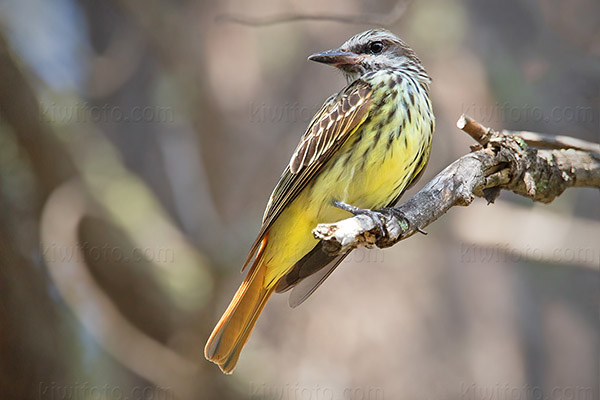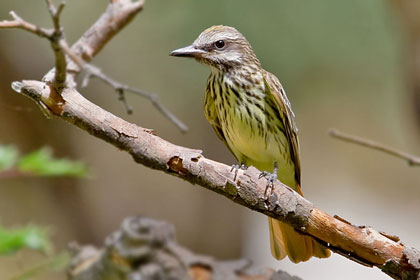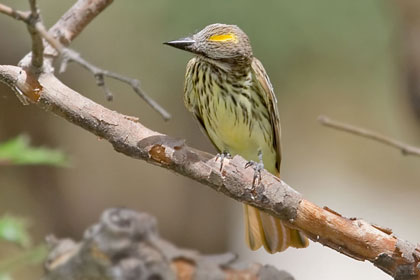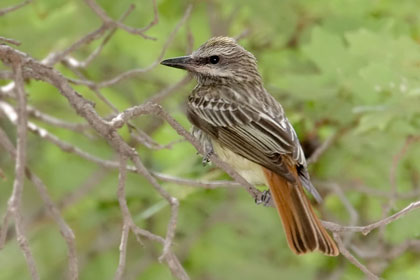GALLERIES > BIRDS > PASSERIFORMES > TYRANNIDAE > SULPHUR-BELLIED FLYCATCHER [Myiodynastes luteiventris] [plot on map]
Location: South Fork (Chiricahua Mtns), AZGPS: 31.9N, -109.2W, elev=5,393' MAP Date: August 3, 2020 ID : B13K9536 [4896 x 3264]
|
|

|
Location: Ramsey Canyon, AZGPS: 31.5N, -110.3W, elev=5,070' MAP Date: July 30, 2009 ID : 7C2V0313 [3888 x 2592]
|
Location: Ramsey Canyon, AZGPS: 31.5N, -110.3W, elev=5,070' MAP Date: July 30, 2009 ID : 7C2V0311 [3888 x 2592]
|

|
Location: Ramsey Canyon, AZGPS: 31.5N, -110.3W, elev=5,070' MAP Date: July 30, 2009 ID : 7C2V0323 [3888 x 2592]
|
Location: Ramsey Canyon, AZGPS: 31.5N, -110.3W, elev=5,070' MAP Date: July 30, 2009 ID : 7C2V0360 [3888 x 2592]
|

|
SPECIES INFO
The Sulphur-bellied Flycatcher, Myiodynastes luteiventris, is a large Tyrant flycatcher. This bird breeds from southeasternmost Arizona of the United States-(the Madrean sky islands region of Arizona, southwestern New Mexico, and northern Sonora, Mexico), to Costa Rica. They are short distance migrants, spending winters in the eastern Andean foothills of Colombia, Ecuador, Peru, Bolivia, and Brazil, and are passage migrants over the southern portions of Central America.
The most distinguishing characteristics of this flycatcher are the heavy streaking of its plumage, and its pale yellow belly. The bird also shows a rusty brown tail, and a black eyestripe. Its call sounds like noises made by children's or pet's 'squeaky-toys'.
Sulphur-bellied Flycatchers usually occur in woodlands of montane canyons, at elevations between 1000-2000 meters. They make a cup nest in a tree cavity or old woodpecker hole. The female lays 2-4 eggs.
They wait on an open perch usually rather high or on top of the tree and fly out to catch insects in flight-(hawking). They will also take berries and seeds.
|
|





